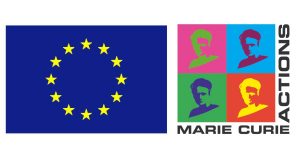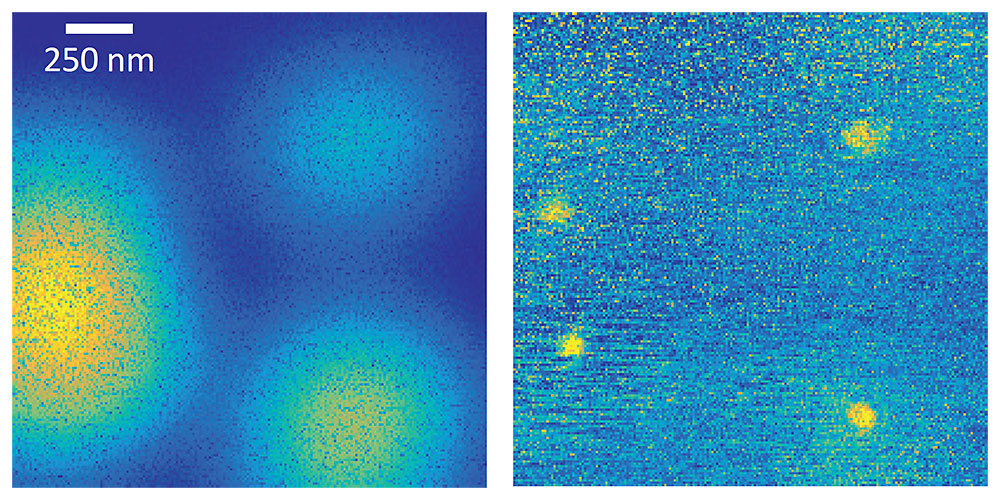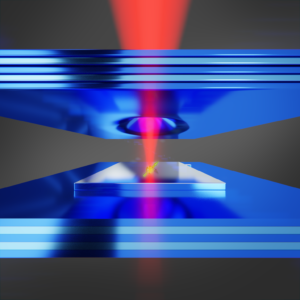Host: Prof. Dr. Richard J. Warburton, in collaboration with the Quantum Sensing group (prof. Patrick Maletinsky) and the Nano-phononics group (prof. Ilaria Zardo)
Fellow: Dr. Tomasz Jakubczyk
Core participants: Viktoria Yurgens, Sigurd Flågan, Brendan Shields
The ultimate goal of the project is to achieve high-frequency generation of spin-spin entanglement in spatially separated nitrogen vacancy (NV) centers in diamond. While current photon collection efficiencies (few percent) and entanglement rates (approx. one entanglement event per minute) may be sufficient for proof-of-principle experiments, they need to be greatly improved for the implementation in practical quantum networks.
The project exploits deterministic cavity-assisted enhancement of the coherent photon emission rate of NV centers embedded in a micrometer-thin diamond sample. The increase of the decay rate results in enhanced radiative efficiency and makes the emission robust against dephasing, enhancing the photon indistinguishability and boosting the photon extraction efficiency. This work helps in establishing the NV center as not only spin- but also optically- coherent.
The main experimental challenge is to eliminate the optical linewidth broadening resulting from necessary processing of the diamond crystal, even though the processing remains at a minimal level in the selected open cavity scheme. We’re examining the suitability of novel NV fabrication methods to tackle this issue. In parallel, we are examining sources of optical losses in our open cavity design and trying to eliminate them to push the performance to a new level.
In the long term, the project aims at enabling new ways of studying phenomena resulting from the enhanced light-matter coupling of the NV center and other quantum emitters. Success of this project may provide a route to the realisation of scalable quantum computers based on optical networks of electronic and nuclear spins.

News:
-We examined the effect of a novel approach of creating NV centers in thin diamond samples, where the nitrogen is implanted after all etching processes have been completed. Results of our studies are described in Ref. [1].
-We achieved pulsed laser-induced and solid-immersion lens (SIL)-assisted generation of low-noise NV centers in diamond. The NV center ensemble features a distribution of zero-phonon-lines with a mean of 58 MHz and standard deviation of 19 MHz. This includes the effect of long-term spectral diffusion caused by a necessary green repump laser for charge stabilization. Such high-quality NVs are excellent candidates for practical implementations employing two-photon quantum interference with separate NV centers. We are currently working on implementing these NVs in our open microcavities.
Publications:
[1] Kasperczyk, M., Zuber, J. A., Kölbl, J., Yurgens, V., Flågan, S., Jakubczyk, T., … Warburton, R. & Maletinsky, P. (2020). Statistically Modeling Optical Linewidths of Nitrogen Vacancy Centers in Post-Implanted Nanostructures. arXiv preprint arXiv:2005.03666.


